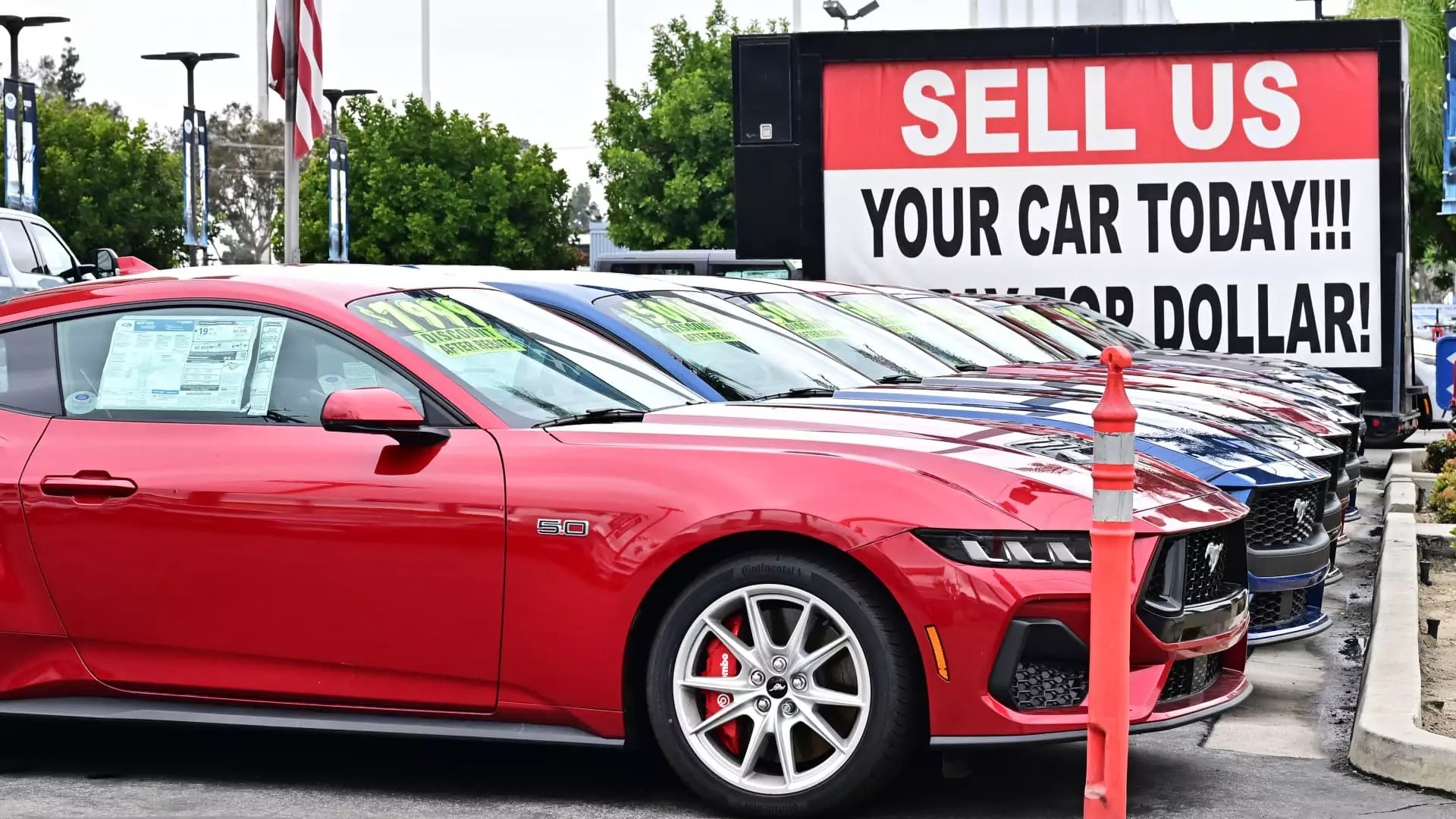In an economy characterized by volatility and unpredictability, the used car market stands as a peculiar microcosm of broader economic currents. Recent statistics reveal that the Manheim Used Vehicle Value Index has observed a significant dip of 1.5% from April to May 2024, a decline that might lead one to speculate about the health of the used vehicle sector. However, when one takes a step back, this price reduction shouldn’t be too alarming. April’s figures were already inflated due to consumer panic purchasing, driven by anxieties over impending tariff hikes. The situation demonstrates the cyclical nature of consumer behavior, particularly when it comes to large purchases—a trait all too common in the American psyche.
The Tariff Effect: A Double-Edged Sword
Under the Trump administration, consumers were subjected to 25% tariffs on new imported vehicles and a range of parts, which supposedly would result in a boost for domestic manufacturers. However, the reality has been far more complicated. While these tariffs do not directly affect used car sales, they create ripples that impact new vehicle pricing, production rates, and consequently, the used market. This inextricable link indicates how policy decisions resonate far beyond their intended targets. Instead of supporting the manufacturing sector, these tariffs could inadvertently distort the used vehicle landscape, driving prices up and creating scarcity.
Demand Dynamics: A Telling Imbalance
Despite a minor decrease in retail used vehicle sales—down 3% from April yet still 4% higher year over year—two critical factors remain at play: low inventory and changing consumer habits. With only 2.2 million used vehicles available, significantly lower than historical norms, demand for pre-owned cars remains robust. Americans are increasingly holding onto their vehicles, a trend accelerated by the recent pandemic and its aftereffects on production lines. This approach of vehicle ownership translates to a deferred demand that is likely to surge as households grow more comfortable with financial commitments following economic stabilization.
The Conundrum of Price Stability
Cox Automotive predicts a stabilization in used vehicle prices after years of erratic fluctuations. This optimism stems from an understanding that consumer behavior is increasingly dictating market trends. Retail prices are not falling as quickly as wholesale prices—a detail often overlooked in the broader conversation about economic health. The slower response times in retail could signify that dealers are trying to maintain profit margins, or that consumer expectations have adjusted in response to recent market shifts. Regardless, the consumer’s willingness to purchase and hold on to their vehicles looks indicative of a more permanent change in buying behavior, perhaps reflecting deeper-rooted values that prioritize saving and prudent spending.
Through this lens, the used vehicle market is more than a simple exchange of goods; it reflects a society grappling with financial realities. The discrepancies between wholesale and retail prices expose an inefficiency that many populists dislike but seem ready to accept. These dynamics call for policymakers to rethink strategies, addressing how external shocks like tariffs can shape consumer markets, often with unintended consequences that trickle down to everyday Americans seeking value and reliability in their automobile purchases.

